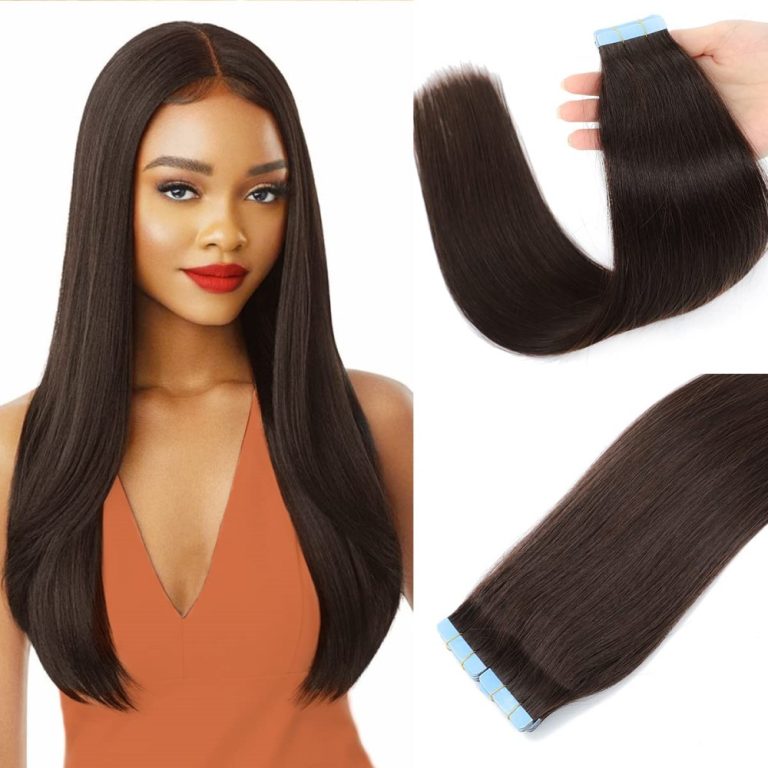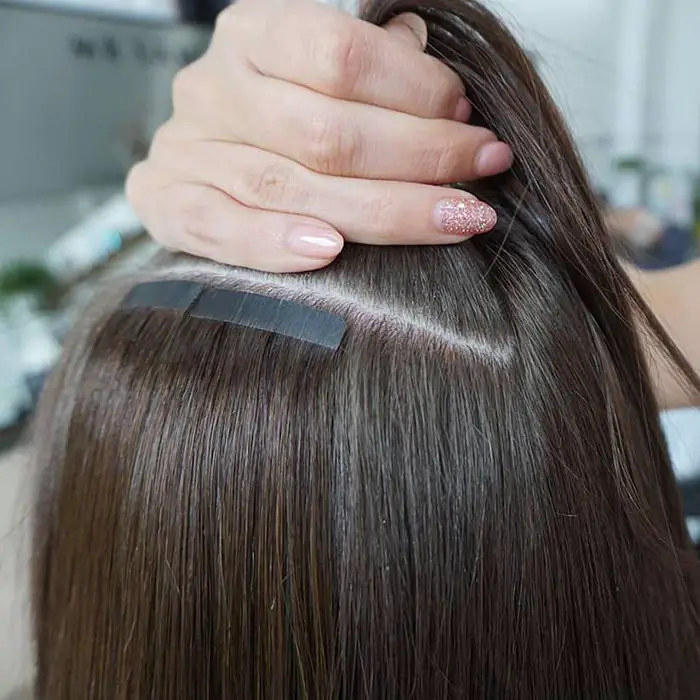
Are Tape In Extensions Damaging? Safety and Maintenance
Tape-in extensions have become a popular choice for those looking to enhance their hair’s length and volume without the commitment that comes with more permanent methods. However, a common concern among potential users is, are tape in extensions damaging to your natural hair? Understanding how these extensions work and their effects on hair health is crucial for anyone considering this option.
This article will delve into the benefits of tape-in extensions, explore their impact on hair health, provide essential care tips, and ultimately help you make an informed decision about whether tape-in extensions are right for you.
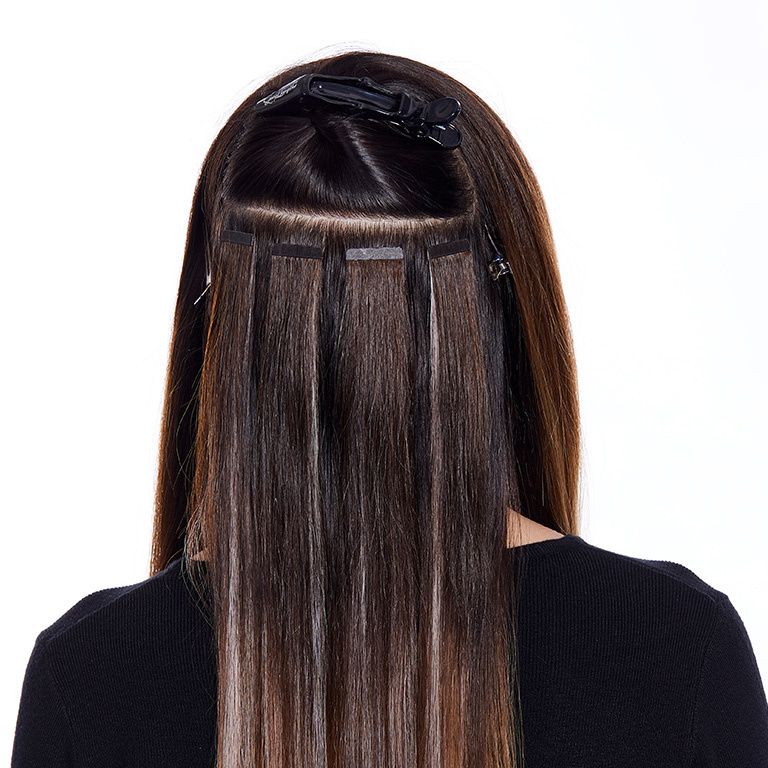 What Are Tape-In Extensions?
What Are Tape-In Extensions?
Tape-in extensions are a popular semi-permanent hair extension method. They involve thin adhesive strips that attach to your natural hair. These extensions are known for their lightweight and discreet appearance. They add length, volume, and thickness to your natural hair.
How They Work and Their Unique Features
Tape-in extensions use medical-grade adhesive for secure attachment. The extensions come in pre-taped wefts, which a stylist applies to hair sections. They are pressed together like a “sandwich” around natural hair. This creates a seamless bond and a natural look. Unlike clip-ins, tape-ins lay flat, blending more effectively with your hair. They are reusable with proper care, making them a cost-effective option.
Tape-in extensions are thinner and lighter compared to fusion or sew-in methods. This minimizes stress on your scalp and hair. They also work well for individuals with fine or thin hair. The adhesive is hypoallergenic, reducing the risk of irritation for most users.
Comparison with Other Hair Extension Methods
Compared to other types, tape-in extensions offer ease of application and removal. Clip-in extensions, for instance, are temporary and suitable for occasional use. However, they can be bulkier and less natural-looking. Sew-in extensions, often used for thick hair, require braiding, which stresses the scalp. Fusion extensions take hours to install and use heat, which can damage hair.
Tape-ins strike a balance between durability and hair safety. They take less time to apply than fusion and are gentler than sew-ins. Additionally, they are more durable than clip-ins and stay in place for 6-8 weeks. These features make them a versatile choice for many hair types and lifestyles.
Benefits of Tape-In Extensions
Are tape in extensions damaging? Tape-in extensions provide multiple advantages that make them a popular choice for many. These benefits stand out due to their practical usage, appearance, and convenience. Below are the key benefits that make these extensions a preferred option.
Natural Look and Feel
Tape-in extensions blend seamlessly with your natural hair. Their lightweight design ensures they feel comfortable to wear. The thin adhesive strips help them lay flat against your scalp. This creates a discreet and natural appearance. They are perfect for people seeking a subtle enhancement without sacrificing style. Proper installation ensures they match your hair texture and color.
Easy Application and Removal Process
Tape-in extensions are quick to apply and remove. Installation usually takes less than an hour. A professional stylist adheres them using medical-grade adhesive. This ensures a secure attachment without causing pain or discomfort. Removal involves using a special solvent to dissolve the adhesive. The process avoids pulling or tugging, reducing the chance of hair damage. Their simplicity makes them ideal for anyone seeking efficient hair extensions.
Long-Lasting Results
With proper care, tape-in extensions can last for 6-8 weeks. They are reusable, making them cost-effective. You can reapply them using fresh adhesive after professional cleaning. Extensions stay in place through daily activities, maintaining their appeal and durability. Their longevity means fewer appointments and less hassle for your hair routine. Investing in high-quality tape-ins ensures optimal results for extended use.
 Potential Risks of Tape-In Extensions
Potential Risks of Tape-In Extensions
Are tape in extensions damaging? Tape-in extensions are generally safe, but they come with some potential risks. Understanding these risks can help you make an informed decision and maintain healthy hair.
Can Tape-In Extensions Damage Hair?
Improper use of tape-in extensions can cause hair damage. Incorrect installation may lead to hair breakage. Removal mistakes can also pull on natural hair, causing thinning. Using low-quality extensions or adhesives can weaken your hair over time. However, professional application and good care can significantly minimize these risks. Are tape in extensions damaging?
Common Mistakes That Lead to Damage
- Skipping Professional Help: DIY application often results in uneven placement or excessive tension.
- Using Harsh Products: Alcohol-based or harsh chemicals can weaken the adhesive and hair strands.
- Not Following Maintenance Practices: Poor care, like skipping brushing, tangles both extensions and natural hair.
- Wearing Extensions for Too Long: Prolonged use without maintenance can strain roots and lead to hair loss.
- Using Excessive Heat Tools: Heat can melt the adhesive and damage extension bonds.
Addressing Concerns About Scalping and Health
Scalp issues like irritation or itching are rare but possible. Poor-quality adhesives may cause allergic reactions. Extensions installed too tightly can stress the scalp, leading to discomfort. Properly placed and high-quality tape-ins reduce these problems. Regular scalp care and choosing hypoallergenic adhesives ensure safety. Always consult a professional if you experience persistent scalp issues.
Tips for Safe Use of Tape-In Extensions
Are tape in extensions damaging? Maintaining the health of your natural hair while using tape-in extensions requires careful attention. Follow these tips to ensure safe and effective use of extensions.
Choosing High-Quality Extensions
Invest in high-quality tape-in extensions made from 100% Remy human hair. These extensions are durable and blend well with natural hair. Ensure the adhesive used is medical-grade and hypoallergenic. This reduces irritation risk and ensures a secure bond. Avoid cheap, synthetic options as they can tangle easily and appear unnatural.
Research reputable brands with positive customer reviews before purchasing. High-quality extensions last longer and require fewer replacements. They offer a better overall experience and minimize the risk of damage.
Proper Installation Techniques
Always seek professional help for applying tape-in extensions. Stylists know proper sectioning and placement for a secure fit. Incorrect application can pull on natural hair and lead to breakage. Trained professionals use the right tools and techniques to avoid unnecessary tension.
Ensure the adhesive is applied with precision, and the extensions are placed flat. Uneven placement can create discomfort or a bulky look. A skilled stylist ensures the extensions match your hair length, texture, and color.
Maintenance and Care for Long-Term Safety
Brush your hair daily using a soft-bristle brush to avoid tangling. Hold the roots to prevent pulling. Use sulfate-free shampoos and conditioners to maintain adhesive strength. Avoid applying heavy oils or products near the tape bonds.
Schedule regular touch-up appointments every 6-8 weeks. This allows the stylist to reposition extensions and maintain a healthy look. Ensure that you remove extensions properly using a professional-grade solvent.
Protect your extensions during heat styling by using low-temperature settings and heat protectants. Avoid excessive heat, as it can weaken adhesive and damage extensions. Sleeping on a silk pillowcase can help reduce friction and tangling overnight.
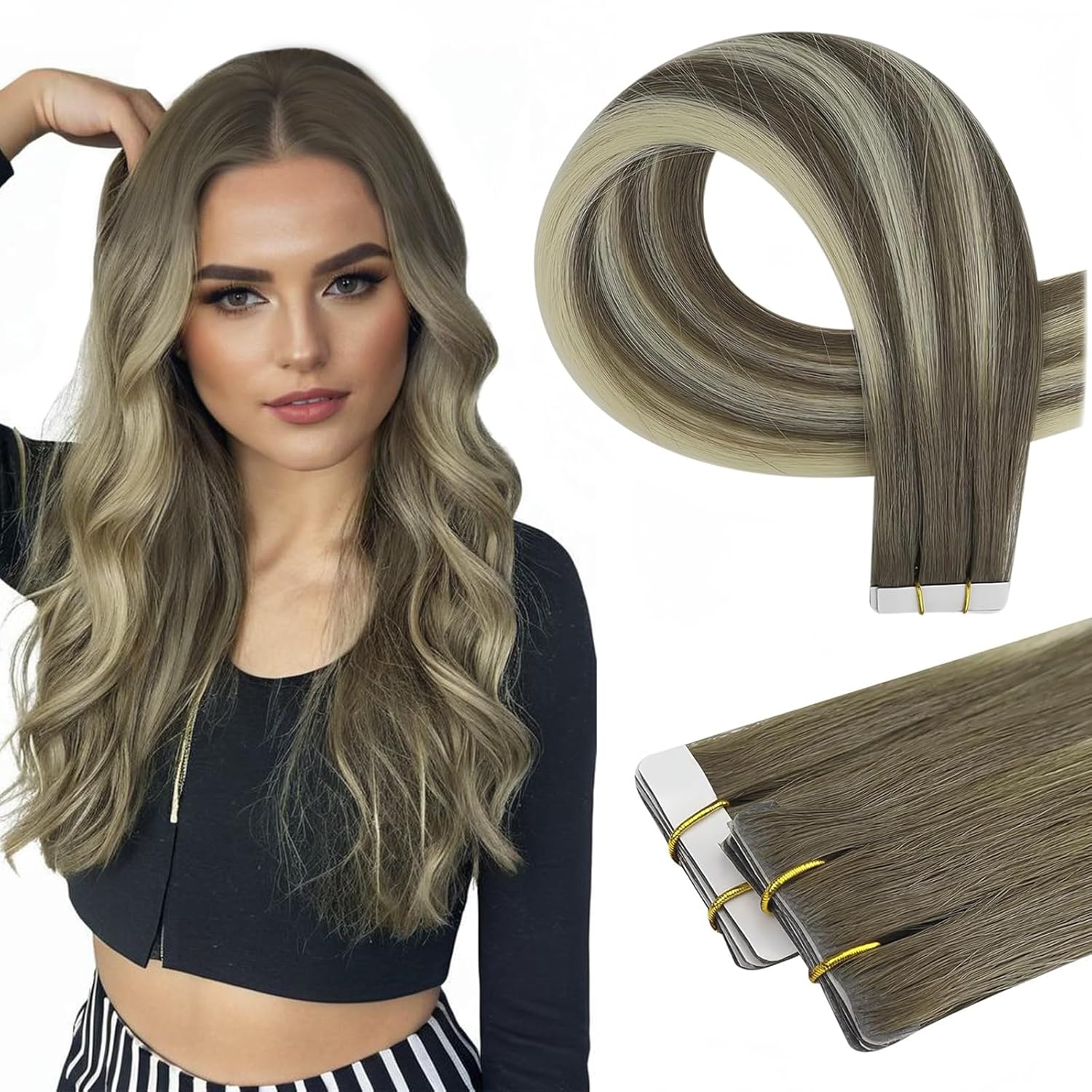 How to Minimize Damage with Tape-In Extensions
How to Minimize Damage with Tape-In Extensions
Are tape in extensions damaging? Tape-in extensions can enhance hair when used correctly. By following best practices, you can minimize potential damage. Focus on professional application, regular care, and avoiding misuse to protect your natural hair.
The Importance of Professional Installation
Always choose a licensed stylist for applying tape-in extensions. Professionals know the correct methods to prevent damage. They place extensions evenly to avoid pulling on your natural hair. Proper placement reduces tension and prevents scalp irritation. Expertise ensures extensions blend naturally with your hair, enhancing appearance without harm.
DIY installation often leads to uneven placement or excessive stress on hair strands. Avoid this by investing in professional help. It’s a safer option that also offers a longer-lasting and better result.
Regular Hair Checks and Hydration
Schedule routine hair checks with your stylist every 6-8 weeks. Regular visits ensure the extensions stay secure and don’t harm your roots. These appointments allow for repositioning or replacing tape-ins if necessary. Timely adjustments help prevent matting or tangling, which can lead to breakage.
Hydrate both your natural hair and extensions using appropriate products. Sulfate-free shampoos and conditioners maintain the adhesive strength. Moisturized hair stays more resilient, reducing risks of dryness or brittleness. Also, drink plenty of water for overall hair health.
Avoiding Overuse or Misuse
Don’t wear tape-in extensions longer than the recommended 6-8 weeks. Leaving them in too long can strain your roots, causing damage. Always remove extensions with a professional-grade solvent to avoid pulling on natural hair.
Minimize the use of heat tools near the adhesive bonds. Excessive heat weakens the adhesive, making extensions fall out or damage hair. Additionally, avoid heavy oils or styling products near the tape area, as they can break down the adhesive. Use proper care practices to keep hair safe and extensions intact.
By prioritizing professional installation, regular checks, and careful use, you can enjoy tape-in extensions without risking hair damage.
Alternative Hair Extension Options
Exploring alternative hair extension methods can help you find the best fit for your hair type and lifestyle. Tape-in extensions are popular, but other choices may offer unique advantages. Let’s compare some alternatives.
Clip-In Extensions as a Safer Alternative
Clip-in extensions are a temporary option suitable for occasional use. They come with small clips that attach to your hair. Unlike tape-ins, they do not use adhesive, which makes them gentler.
Advantages:
- Easy to install without professional help.
- No risk of adhesive damage to natural hair.
- Ideal for quick style changes.
Disadvantages:
- Bulky feel compared to tape-ins.
- Less seamless blending with fine hair.
- Limited durability; they can slip during active movements.
Clip-ins are great for those who want flexibility and a low-maintenance solution. They are also budget-friendly and ideal for beginners.
Sew-In Extensions Versus Tape-In Extensions
Sew-in extensions require braiding your hair and stitching extensions into the braids. They are mainly suited for thicker and textured hair types.
Comparison with Tape-Ins:
- Durability: Sew-ins last longer, usually 8-12 weeks, compared to tape-ins (6-8 weeks).
- Hair Type: Works better for thick hair due to tension during installation.
- Comfort: Tape-ins lay flat; sew-ins can strain your scalp.
While sew-ins are durable, they require more complex installation and a longer appointment. Tape-ins are quicker and gentler on fine hair.
Comparing Costs and Maintenance Requirements
Hair extensions vary in cost and upkeep. Here’s a brief comparison:
- Clip-Ins: Lowest initial cost, minimal maintenance, and reusable. Perfect for occasional use.
- Tape-Ins: Moderate cost per application. Requires 6-8 week touch-ups for repositioning.
- Sew-Ins: Higher upfront cost due to lengthy installation. Regular maintenance needed for natural hair under braids.
Choose a method based on your budget and how much time you can dedicate to maintenance. Evaluate your hair type and styling needs before deciding.
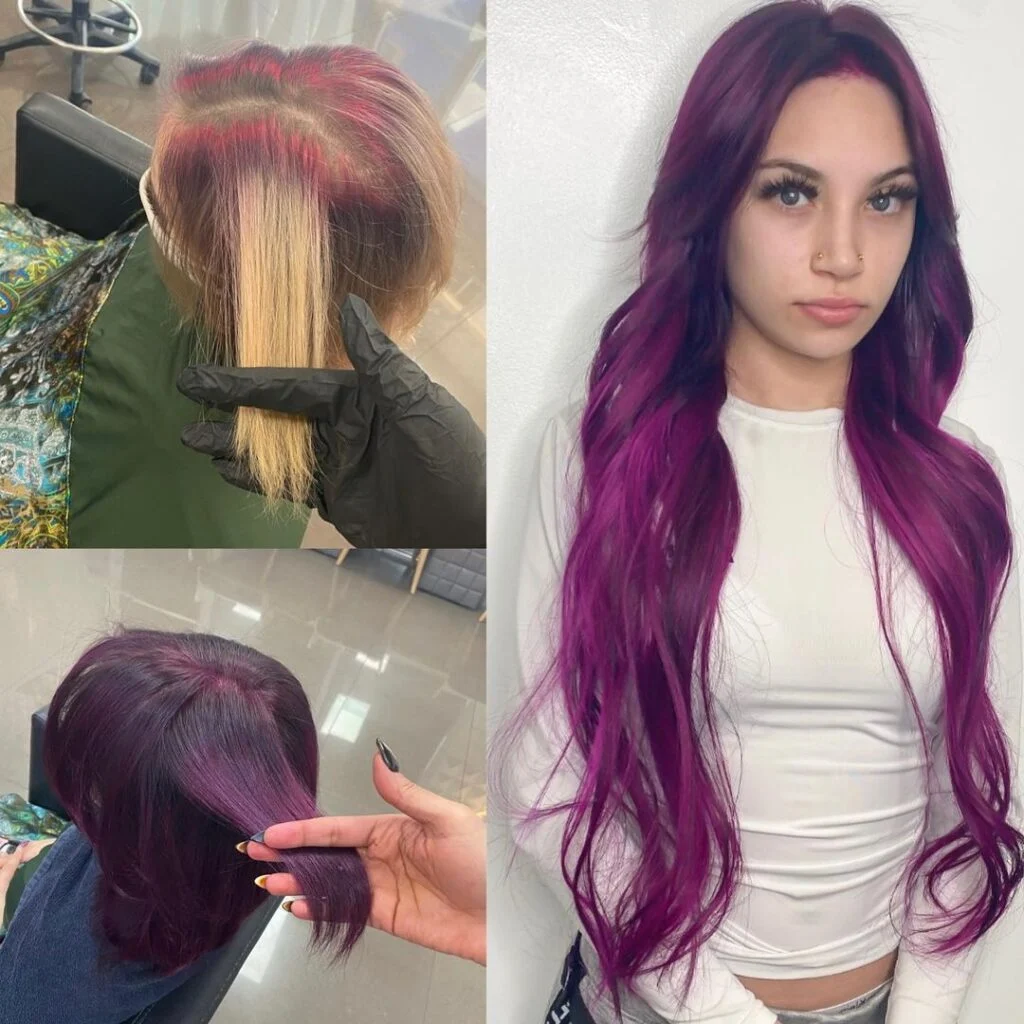 Expert Advice on Tape-In Extensions
Expert Advice on Tape-In Extensions
Seeking professional advice improves your experience with tape-in extensions. Experts share valuable tips for choosing and maintaining extensions.
Recommendations from Professional Hair Stylists
Stylists recommend investing in high-quality extensions made from Remy human hair. These blend seamlessly and last longer. Choose hypoallergenic adhesives to avoid irritation and ensure secure bonding. They stress the importance of professional installation to avoid damage caused by incorrect application. Experts also advise regular maintenance appointments every 6-8 weeks to keep extensions looking neat and prevent tangles.
Styling professionals suggest gentle care practices. Use sulfate-free shampoos and conditioners to maintain adhesive strength. Brush extensions daily with a soft-bristle brush, holding roots to avoid pulling. Protect extensions during heat styling with heat protectants and low-temperature settings. Adopting these practices ensures both durability and the health of natural hair.
FAQs About Tape-In Extensions
Below are answers to common questions about tape-in extensions:
1. Are tape in extensions damaging to hair?
Proper application and care minimize damage risks. Incorrect methods may cause breakage or thinning.
2. How long do tape-in extensions last?
With good care, they last 6-8 weeks and are reusable after professional cleaning.
3. Can I wash my hair with tape-ins?
Yes. Use sulfate-free products and avoid heavy oils near adhesive bonds.
4. Are tape-ins suitable for thin hair?
Yes. They are lightweight and blend well without adding bulk to fine hair.
5. Can I color tape-in extensions?
It’s possible with professional help, but pre-colored extensions are recommended for consistency.
When to Consult a Specialist
Consult a stylist immediately if you notice irritation or discomfort from tape-in extensions. Seek expert help for improper placement, adhesive-related issues, or visible hair thinning. Specialists can reposition extensions or recommend hypoallergenic products for sensitive scalps. Regular check-ups ensure extensions are safe and look their best. Always trust licensed stylists for installation or removal to avoid mistakes. Professional guidance guarantees optimal results while protecting natural hair health.
 Conclusion: Enjoying the Benefits of Tape-In Extensions Safely
Conclusion: Enjoying the Benefits of Tape-In Extensions Safely
In conclusion, understanding are tape in extensions damaging is crucial when considering them for your hair. While they offer significant benefits, such as versatility and natural appearance, it’s essential to be mindful of the potential risks associated with improper application and care.
By choosing high-quality products, following proper maintenance routines, and recognizing when to remove them, you can enjoy the beauty of tape-in extensions without compromising your hair’s health. Embrace the enhancement they offer and elevate your hair game safely!

